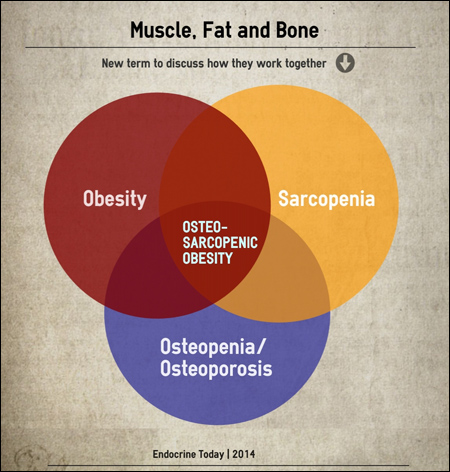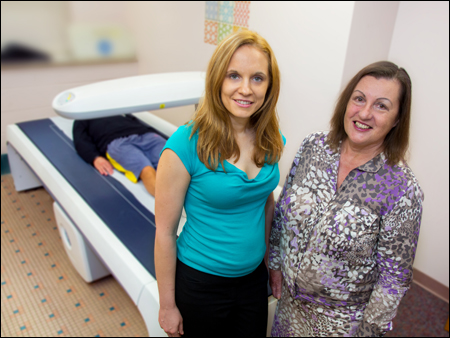Triad of conditions involving muscle, bone, weight receives new name
Upon investigation into the interrelationship among the loss of muscle mass and bone density deterioration in patients with obesity, researchers have coined two new terms to encompass the range of conditions involved, according to a recently published review.
Just as sarcopenic obesity provides a term to discuss decreased muscle mass and strength with the coexistence of adiposity, “osteopenic obesity” was introduced by scientists at Florida State University to discuss reduced bone mass in the context of obesity, followed by “osteosarcopenic obesity” as a way to cover all conditions at the same time.
For the review, Jasminka Ilich-Ernst, MS/RD, PhD, Hazel Stiebeling professor of nutrition at Florida State University, and colleagues analyzed data from her previous study in postmenopausal women who were overweight or obese that measured bone density, fat tissue and muscle mass. One-third had more than 30% fat tissue, plus osteopenia and sarcopenia.

“The findings indicate that bone, muscle and fat are codependent, although we are only at the beginning of discovering the connections,” the researchers wrote.
The review examined the interactions of muscle, fat and bone tissue on a cellular level, considering their endocrine features — with special emphasis placed on the mesenchymal stem cell commitment into osteoblastogenic, adipogenic and myogenic lineages and the causes of its deregulation.
“It is reasonable to say that under certain conditions, osteoporosis and sarcopenia are the obesity of bone and muscle, respectively, and the three tissues are in a close interface and should be studied concurrently,” the researchers wrote.
This triad of conditions puts more elderly women at higher risk of falls and fractures, according to the analysis, and can affect people of all ages and genders, particularly those who are obese and, possibly, have conditions such as diabetes or cancer.

Doctoral student Julia Inglis and professor Jasminka Ilich-Ernst are pictured.
Image courtesy of Florida State University Photography Services/Bill Lax.
The researchers suggest imaging techniques, including quantitative CT and echoMRI, along with physical performance assessments as diagnostic tools to identify muscle, bone and fat physiology.
The proof of concept will be further substantiated in a paper detailing results of data from 200 women, published in two abstracts but not completely included in the review, Ilich-Ernst told Endocrine Today. — by Allegra Tiver
Disclosure: The work was partially funded by the Hazel Stiebeling Fellowship award.
